A new suite of DART buoys in the South Pacific Ocean spotted waves set in motion by three tsunamigenic earthquakes that occurred within hours of one another.
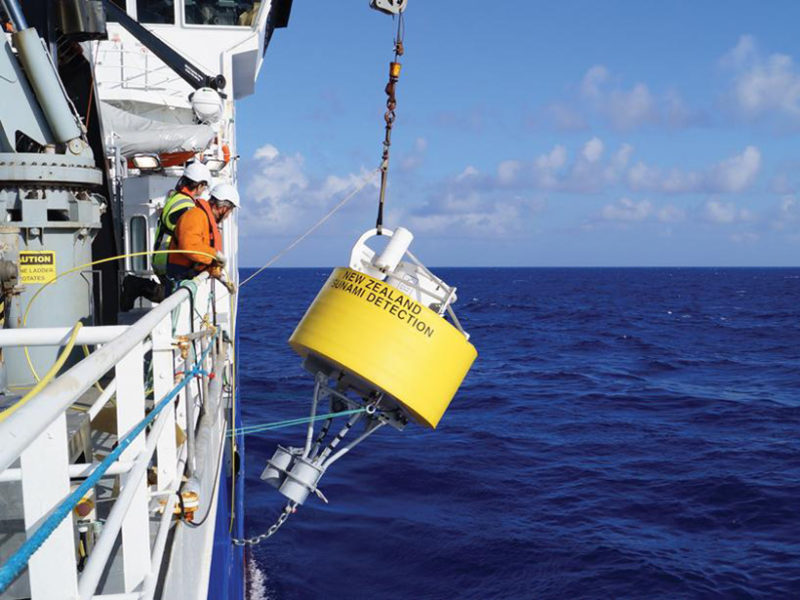
In tsunami-prone regions, an earthquake is a cue to head to higher ground. But deadly waves can still be on the way if a temblor is felt only weakly—or not at all. Now, researchers working in the southwestern Pacific Ocean have deployed a new suite of ocean-based sensors to detect tsunamis directly. And earlier this year, the instruments spotted a rare triple tsunami caused by three tsunamigenic earthquakes that struck within hours of one another.
Measure the Wave
A fault rupture, specifically, the vertical thrust produced by a converging subduction plate boundary, can be a recipe for a tsunami. But inferring a tsunami’s severity using data from land-based seismometers—before the waves roll ashore—is fraught with uncertainty.
That’s why instruments that measure tsunamis directly—tsunameters—are key, said Bill Fry, a seismologist at GNS Science in Wellington, New Zealand, and a member of the New Zealand Tsunami Experts Panel.
“Rather than using the earthquake as a proxy, we’re actually measuring the tsunami wave.”
Tsunameters come in many different forms: Coastal sea level gauges measure changes in water level near shorelines. Cables snaking across the seafloor detect variations in pressure caused by passing tsunamis. Deep-ocean Assessment and Reporting of Tsunamis (DART) buoys record changes in sea surface height.
This video presents a computer models of a possible plate boundary M8.9 earthquake and its resulting tsunami along the Hikurangi fault zone for the purposes of civil defence and emergency planning. Video courtesy of East Coast Lab, New Zealand:
DART buoys in particular have many advantages, said Fry. They’re cheaper to deploy than seafloor cables, and they’re not as influenced by nearshore wave effects as coastal sea level gauges are. If they’re placed near the source of an earthquake—such as above an ocean trench—they can also provide advance warning of incoming tsunamis.
The first DART buoy was deployed in 2000, and five others, all moored in the Pacific Ocean, were added by the end of 2001. Three years later, an official network of the tsunameters was established in response to the deadly tsunami that followed the Sumatra–Andaman earthquake on 26 December 2004. Today over 60 DART buoys stand sentry around the world’s oceans.
“They’re fascinating things,” said Jose Borrero, a coastal and tsunami scientist at eCoast Marine Consulting and Research in Raglan, New Zealand, and a member of the Tsunami Experts Panel. A DART buoy is composed of a bottom pressure recorder on the seafloor and a surface buoy for transmitting data via satellites, and it can detect minuscule changes in sea surface height. “It can distinguish millimeters of water level fluctuation,” said Borrero.
Filling in the Gaps
Despite the dangers of tsunamis, some subduction plate boundaries still remain relatively poorly monitored. One example is the Kermadec Trench north of New Zealand. This subduction zone is particularly likely to spawn earthquakes, said Stephen P. Hicks, a seismologist at Imperial College London, because its tectonic plates are converging rapidly, at roughly 7 centimeters per year. “That’s one of the fastest plate boundaries on Earth,” said Hicks.
The Kermadec Trench, and others nearby, could send tsunamis rolling up on the northern coasts of New Zealand. Armed with that knowledge, the government of New Zealand decided to add 12 new DART buoys to the southwestern Pacific.
In December 2019, researchers working aboard the R/V Tangaroa deployed the first four off the eastern coast of New Zealand. The bright yellow buoys, emblazoned with “New Zealand Tsunami Detection,” were joined within a year by four others. By the end of 2021, four more will be installed. Altogether, they’ll monitor the active Hikurangi, Kermadec, Tonga, and New Hebrides trenches.
Three Earthquakes, Three Tsunamis
The buoys currently in the water are already collecting data, and on 5 March they spotted something rare: a triple tsunami.
That day, three separate earthquakes, all greater than magnitude 7, struck near New Zealand. They occurred in rapid succession—at 2:27 a.m., 6:41 a.m., and 8:28 a.m. local time—within 1,000 kilometers of one another. Each launched its own tsunami, and the new DART buoys detected the waves.
These three overlapping events made for a great test of the new tsunameter network, said Borrero. “Any sort of response system is hard-pressed to deal with that.”
The new data make it possible to more rapidly estimate potential tsunami impacts in the southwestern Pacific. Observations on 5 March of the waves set in motion by the third earthquake, the largest, at M8.1, allowed researchers to more accurately measure the maximum wave amplitude and better estimate the duration of the tsunami threat to New Zealand’s shorelines. In particular, officials used the measurements to conclude that dangerous waves were no longer likely more than 4 hours earlier than would have been possible previously.
“Pre-DART, cancelation decisions would have been based on coastal tide gauges,” Fry told Eos. “Many of New Zealand’s tidal gauges are in harbors that can trap energy for hours to days after tsunami waves arrive.”
These new DART buoys will protect more than just the southwestern Pacific, said Borrero. The data they collect will be disseminated to countries like Chile and the United States that also border the Pacific Ocean and therefore could experience tsunamis from a distant source. “They give us the warning we need, but then [they also feed] into the global network,” said Borrero. [EOS]
Now subscribe to this blog to get more amazing news curated just for you right in your inbox on a daily basis (here an example of our new newsletter).
You can also follow us on Facebook and/ or Twitter. And, by the way you can also make a donation through Paypal. Thank you!
You should really subscribe to QFiles. You will get very interesting information about strange events around the world.



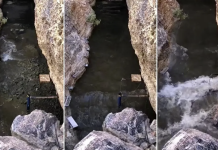


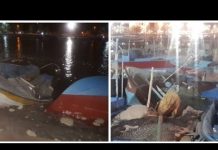

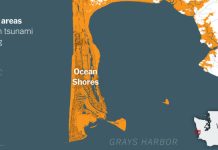
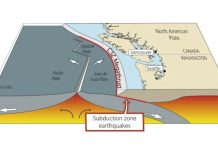
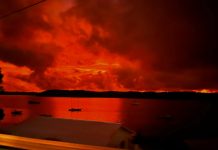


Hmmm, if it saves lives, then it is good news.